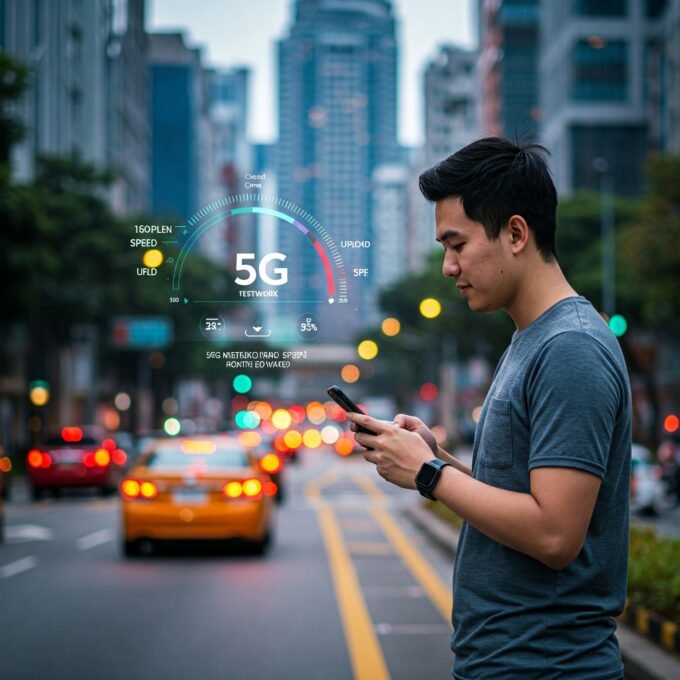While eSIM moves carrier information from external cards to internal devices, iSIM moves the SIM down to the chipset. That reduces size and cost.
In eSIM eases changing carriers for phones and IoT, we covered how SIM cards have evolved into several sizes, each size successively smaller. When the SIM card is removed from a phone, the ability to text, call, or access information on the internet becomes impossible. Now we have eSIM, found in the U.S. version of the iPhone 14, which lets a user activate any cellular plan that supports eSIM. Users can install eight or more eSIMs on an iPhone and switch between two phone numbers at the same time.
While eSIM opens space for other components, we can go smaller still. That’s where integrated SIM (iSIM) comes in.

Figure 1. eSIM is the smallest SIM yet. Image: Sony Semiconductor.
An embedded iSIM (Figure 1) contains the same technology as an eSIM but is smaller (less than 1 mm²) and more secure than a physical SIM or eSIM card. This will make an iSIM the most advanced, efficient, and flexible device-side piece of network equipment as it becomes mainstream. In the meantime, Qualcomm and Vodaphone have already presented a concept demo to show the world the efficiency and readiness of the iSIM functioning in an existing infrastructure. Additionally, some companies have already developed ICs that include iSIM. These ICs have already been designed into cellular communications modules for the embedded and IoT markets, as we’ll see later.
The iSIM, also known as an integrated Universal Integrated Circuit Card (iUICC), lets carriers either preload network profiles or remotely send profiles directly to a subscriber’s handset, or to any other smart device, without the need for a user to physically visit a store.
The iSIM will be about 50% lower cost with fewer components than an eSIM and will enable a more simplified PC board design.
iSIM in IoT
iSIM is integrated into a cellular chip that can then be embedded into a module. This eliminates the need for a physical SIM card. That saves space, reduces power consumption, and decreases cost. The small footprint, which iSIM integration enables, is also leading to applications in small IoT devices such as standalone augmented reality (AR) and virtual reality (VR) headsets, robotics, and wearables.
iSIM has another benefit in that it simplifies deployment. Carrier and subscriber profiles can now be uploaded over wireless and can be easily changed at later times when necessary. There’s be no need to add or modify hardware. IoT users have the simplicity and flexibility to easily change carriers or connect to private networks.
In addition to simplifying deployment, an iSIM is embedded in a trusted, secure area of a device SoC. The iSIM embodies all the benefits of a standards-compliant eSIM card and embeds them, into a device’s permanent hardware array, through the combining of the SIM with the system-on-a-chip (SoC) architecture and cellular modem.
iSIM technology, with its smaller footprint than eSIM, introduces extra layers of iSIM security through a secure domain that will maintain the integrity of all cryptographic and key managed operations.
Security is particularly important in transportation and mobility use cases. The transportation industry needs confidence that shared data is highly secure. iSIM computing system security functions as a hardware root of trust; that is, a solid foundation upon which all the secure operations of the computing system depend. Implementing the most secure root of trust in hardware will ensure that the system is virtually immune from malware attacks. The system will then be able to be a stand-alone security module or even implemented within the processor or a system on chip (SoC).
iSIM standards
The GSMA is making iSIM technology both standardized and easily accessible. There are various industry bodies that standardize SIM technology:
- ETSI handles the iUICC card
- 3GPP standardizes the SIM applications (i.e. what is inside the SIM such as files, applications, etc.)
- GSMA bridges across ETSI and 3GPP to manage those credentials; i.e., through traditional SIM card technology and security standards for personalization, or of eSIM and personalization of SIM cards.
GSMA is running quite a busy schedule right now for iSIM and eSIM technology.
Being as iSIM is fully integrated onto a chipset, personalization of an iSIM now occurs on the chipset itself, not at the SIM supplier premises. GSMA accredits chipset manufacturers as trusted production environments. The SIM holds the keys to the network and the personalized profiles.
Other benefits include standardizing on the same platform for both eSIM and iSIM provisioning. The same level of security will be achieved across eSIM and iSIM, as well as the traditional SIM. Other services may be used that come with those standards, such as IoT Safe, which brings a common approach to providing a secure connection between an IoT application and its servers across all implementations.

Figure 2. Cellular IoT modules such as the NE310L2 from Telit contain iSIM chipsets.
Some of the early chipsets to incorporate iSIM are the ALT1250 and ALT1255 from Sony Semiconductor. IoT modules from Sercomm and Telit (Figure 2) include these chipsets. Qualcomm claims to be the first to support iSIM though its Snapdragon 888 5G Mobile platform.
Conclusion
The next phase of transformation of the SIM card is the iSIM or the integrated SIM. This device is much smaller and will offer far more security than physical SIM cards or even embedded SIM (eSIM) cards. Benefits to the consumer will be a far easier device setup because there will no longer be the need to insert or replace a SIM card. There is also a range of new mobile-connected devices from which the consumer can choose. Devices will also be able to operate independently of a smartphone.
References
iSIM for IoT is Going Mainstream, Sequans
What is Integrated SIM (iSIM)? How is it better than eSIM?, Digitaltrends
IoT Sustainable Transportation: The Role of iSIM, Kigen UK Limited
iSIM and IoT SAFE: Why they’re perfect partners for IoT security, GSMA,
GSMA standardization for the integrated SIM, Mobile World Live video.













Leave a comment